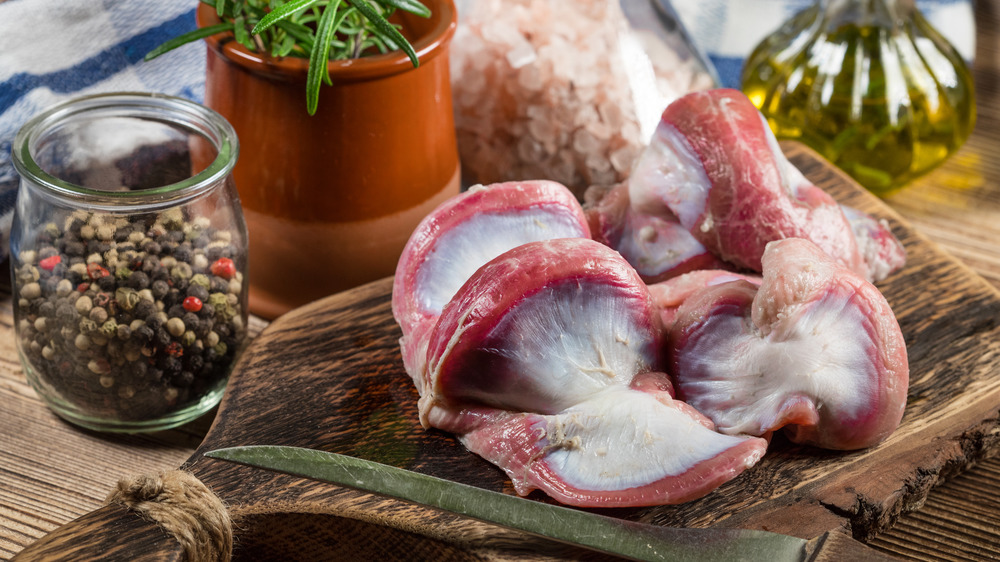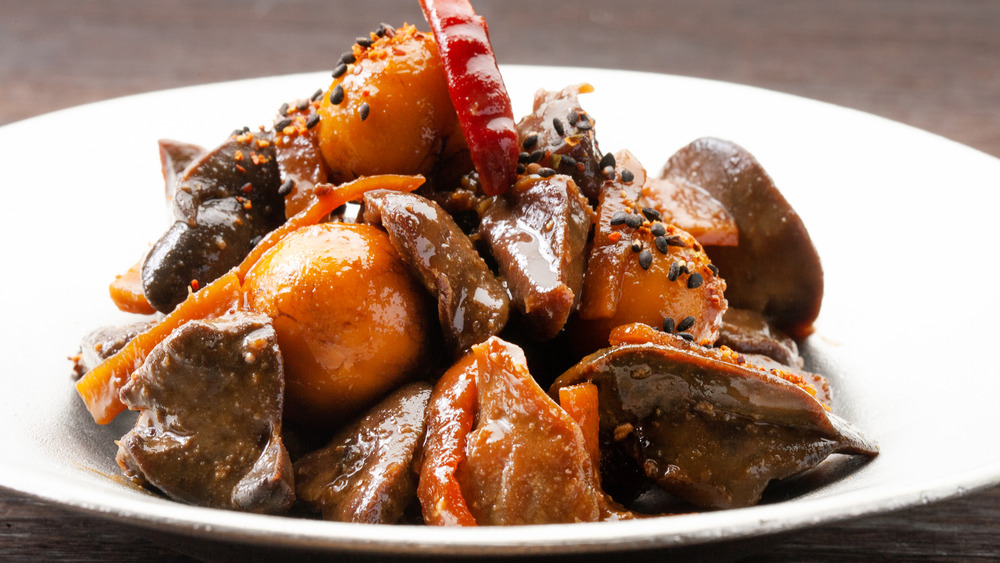Giblets Vs Gizzards: What's The Difference?
"Eye of newt, and toe of frog. Wool of bat, and tongue of dog. Gizzard of turkey, or is it a giblet? Could it be both? Let's give it a nibblet."
Okay, so that's not exactly how the witches' incantation goes in Shakespeare's "Macbeth" (via SparkNotes). But it's easy to picture these witches throwing gizzards or giblets into their cauldron, along with the newt's eye and the frog's toe. In fact, you might be whipping up a Thanksgiving dish involving giblets and/or gizzards — or at least wondering what to do with them after you find them stuffed inside the cavity of your turkey. Before you "double, double" your "toil and trouble" this Thanksgiving, we better get to the bottom of this. What are all those innards that come with the turkey, and is there any way to prepare them without casting an evil spell?
Before cooking your Thanksgiving day bird, take a gander inside the cavity. You're likely to find a plastic or paper bag full of turkey parts. These innards didn't come from the turkey they were stuffed in, according to the U.S. Department of Agriculture. Nonetheless, turkey purveyors need to include these extras, or else label the bird as a "wog" (without giblets).
All gizzards are giblets, but not all giblets are gizzards
What are turkey giblets? They're what's inside the bag: the liver, the heart, the gizzard, and sometimes even kidneys (via Kitchn). The neck comes in that package too and is often considered among the giblets, but who are you going to trust? Someone who writes for a food website, or the U.S. government? The USDA defines giblets as the heart, liver, and gizzard only. They make a point of excluding the neck.
Now we know, a gizzard is one of the giblets. But what is a gizzard, exactly? Domestic poultry have gizzards, as do game birds such as pheasants and grouse (via Devour Asia). It's a second, muscular stomach that chews food for these birds, since they don't have any teeth. In fact, gizzards are sometimes called "hen's teeth" — again, if you are going by what the USDA outlines.
A lot of people probably throw the giblets away, but these organs — and the neck — can be added to a soup stock or serve as the base for good gravy. Chicken gizzards make a nifty side dish, too. Just cook them in a pan with water, and add spice to taste. Devour Asia advises that any scum that rises to the surface of your pan of cooking gizzards can be removed with a spoon, no problem. For a witch's brew, however, it's probably best to leave it in.

